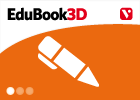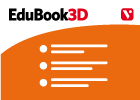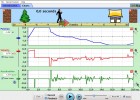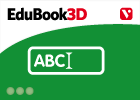Cargando...
Recursos educativos
-
Nivel educativo
-
Competencias
-
Tipología
-
Idioma
-
Tipo de medio
-
Tipo de actividad
-
Destinatarios
-
Tipo de audiencia
-
Creador
-

Interpreta. Líquido amniótico
EduBook Organización
- 3664 visitas
Co fin de que se atope mellor protexido dentro do útero, o embrión (ou o feto) está rodeado por unha bolsa que contén un líquido chamado líquido amniótico: Fai un debuxo desta fotografía dun…
-

End-of-unit evaluation - The nervous system
EduBook Organización
- 3635 visitas
Right now, you are reading these words and you understand them. If you see food when you are hungry, your mouth starts to water. If you burn your hand, you move it away immediately. You automatically do…
-

-

Introduction - The nervous system
EduBook Organización
- 3472 visitas
Right now, you are reading these words and you understand them. If you see food when you are hungry, your mouth starts to water. If you burn your hand, you move it away immediately. You automatically do…
-

Answer. Vertebrates
EduBook Organización
- 3391 visitas
Remember what you have studied in this section and answer the questions: What do all vertebrates have? What do we mean by an articulated skeleton? Most vertebrates have limbs that allow them to move.…
-

-

Choose. Intraspecific relationships
EduBook Organización
- 3316 visitas
Choose the correct word to complete the sentence or answer the question: Corals form relationships called... This involves a parent and the young... There is an established hierarchy and division of…
-

The Moving Man
Tiching explorer Organización
- 6254 visitas
With this simulation students will learn about position, velocity and acceleration graphs. They can move the little man back and forth with the mouse and plot his motion. If we set the position,…
-

End-of-unit evaluation - Animals
EduBook Organización
- 3081 visitas
Animals belong to the largest and most diverse group of living things. There are over two million different animal species. Animals get the energy they need by eating food. They can move from place to…
-

Complete - Remember
EduBook Organización
- 3070 visitas
Complete: Energy is what makes objects move, or change temperature or . Sources of energy can be like the Sun or the wind, or , like coal and oil. Electricity travels to our houses, offices and…
Te estamos redirigiendo a la ficha del libro...













